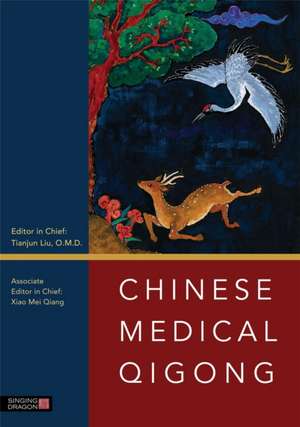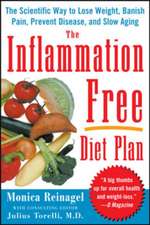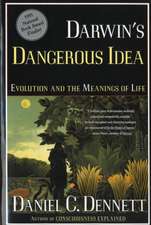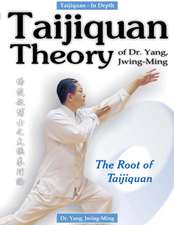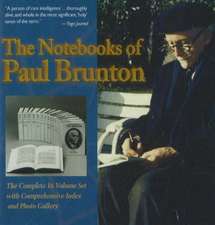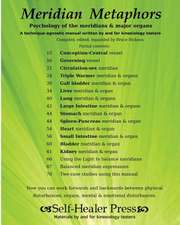Chinese Medical Qigong
Autor Tianjun Liuen Limba Engleză Paperback – 27 mai 2013
Preț: 245.18 lei
Preț vechi: 309.79 lei
-21% Nou
Puncte Express: 368
Preț estimativ în valută:
46.92€ • 50.95$ • 39.41£
46.92€ • 50.95$ • 39.41£
Carte disponibilă
Livrare economică 01-15 aprilie
Livrare express 15-21 martie pentru 111.74 lei
Preluare comenzi: 021 569.72.76
Specificații
ISBN-13: 9781848190962
ISBN-10: 1848190964
Pagini: 407
Ilustrații: black & white illustrations, black & white line drawings, figures
Dimensiuni: 173 x 244 x 20 mm
Greutate: 0.73 kg
Editura: Singing Dragon
ISBN-10: 1848190964
Pagini: 407
Ilustrații: black & white illustrations, black & white line drawings, figures
Dimensiuni: 173 x 244 x 20 mm
Greutate: 0.73 kg
Editura: Singing Dragon
Notă biografică
Editor in Chief: Tianjun Liu, O.M.D., is Director of the Qigong research laboratory at Beijing University of Chinese Medicine where he has taught Qigong for more than twenty years. He is also secretary general of the National Qigong Education and Study Association, secretary general of China Academic Society of Medical Qigong, and the first government approved academic mentor for Ph.D. candidates in the field of medical Qigong in China. For the past decade, Dr. Liu has been Editor in Chief of Qigong Study in Chinese Medicine, the only official Qigong textbook used in universities and colleges of traditional Chinese medicine in China. Associate Editor in Chief: Xiao Mei Qiang is a New York State licensed acupuncturist and a Board Certified herbalist. In 1975, she started traditional Chinese medicine (TCM) study in her apprenticeship with Dr. Zhichun Zhang, a retired doctor and professor from Beijing Chinese Medical College. At the same time, she began acupuncture training in an apprenticeship with Dr. Ciguang Sun and Dr. Yuying Sun, who inherited Chinese medicine knowledge and special acupuncture skills from their older generation and who were the principal acupuncture doctors in the Beijing Police Hospital. Qiang moved to the United States in 1990. She started out studying physical therapy, working in rehabilitation medicine for more than thirteen years. She completed further training in acupuncture and herbology at the Pacific College of Oriental Medicine in New York where she earned her master's degree in TCM. She has also trained in Tung's Acupuncture and in Japanese-style acupuncture, and received certification from Harvard Medical School. Qiang currently practices Chinese medicine in her private office in Manhattan. She is an expert in treating pain, all kinds of headaches, post-stroke conditions, and neurologic disorders. Two Chinese journals, HOW2USA and CHINA FORTUNE, reported her successful treatment of post-stroke and neurologic patients, and she received the Contribution Award of 2008 from the All Chinese Who's Who Awards.
Cuprins
Foreword. General Introduction. I. Essential Concepts of CMQ. II. The Academic System of CMQ. III. Subjects Related to CMQ. IV. The Study of CMQ. Part I: Fundamental Theories. 1. The Origins of Qigong and the Major Schools. Section 1: The Origin of Qigong. I. Historical Texts. II. Medical Texts. III. Archaeological Discoveries. Section 2: Traditional Major Qigong Schools. I. Medical Qigong. II. Daoist Qigong. III. Buddhist Qigong. IV. Confucian Qigong. V. Martial Arts Qigong. 2. Classical Theories. Section 1: Theories of Medical Qigong. I. Theory of Yin-Yang and the Five Elements. II. Zang-Fu (Visceral Manifestation) and Meridian Theory. III. The Theory of Essence-Qi-Spirit. Section 2: Theories of Other Qigong Schools. I. Daoist Qigong Theory. II. Buddhist Qigong Theory. III. Confucian Qigong Theory. IV. Martial Arts Qigong. 3. Modern Scientific Research on Qigong. Section 1: Summary of Modern Research on Qigong. I. Development of Modern Research on Qigong. II. Trends and Controversy in Qigong Research. Section 2: Physiological Effects of Qigong. I. Effects of Qigong on the Respiratory System. II. Effect of Qigong on the Cardiovascular System. III. Effects of Qigong on Neuroelectrophysiology. Section 3: Psychological Effects of Qigong. I. Operational Mechanism of Adjusting Mind in Qigong Practice. II. Psychological Elements of External Qi Therapy. Part II Practical Methods and Skills. 4. Basic Operations of Qigong. Practice. Section 1: Adjustment of Body. I. External Adjustments. II. Internal Adjustment. Section 2: Adjustment of Breath. I. Adjustment of Breathing Types. II. Adjustment of Breathing Air. Section 3: Adjustment of Mind. I. Operation of Mind Adjustment (Yi Nian Tiao Kong). II. Adjustment of the Mental Realm (Jing Jie Tiao Kong). Section 4: Integrating Three Adjustments into One. I. Consolidating Method. II. Extending Method. III. Characteristics of the State Integrating Three Adjustments into One. 5. General Introduction to Qigong Forms. Section 1: Classification of Qigong Forms. I. Classification of Qigong by Academic Schools or Traditions. II. Classification by Dynamic/Static Types. III. Classification by the Three Adjustments. IV. Classification by Practice Style or Characteristics. Section 2: Guidelines and Precautions for Practice. I. Guidelines. II. Precautions Before and After Practicing. Section 3: Possible Reactions to Qigong Practice. Normal Reactions. II. Adverse Reactions. Section 4: Qigong Deviations and Corrections. I. The Causes of Deviation. II. Symptoms of Deviation. III. Classifications. IV. Treatment Methods for Correction of Deviations. 6. Selected Qigong Forms. Section 1: Five-Animal Frolics. I. Practice Method. II. Application. Section 2: The Six Syllable Formula. I. Practice Method. II. Application. Section 3: Muscle/Tendon Changing Classic. I. Practice Method. II. Application. Section 4: Eight Pieces of Brocade. I. Practice Method. II. Application. Section 5: Five Elements Palm. I. Practice Method. II. Application. Section 6: Health Preserving Qigong. I. Practice Method. II. Application. Section 7: Post Standing Qigong. I. Practice Method. II. Application. Section 8: Relaxation Qigong. Practice Method. II. Application. Section 9: Internal Nourishing Qigong. I. Practice Method. II. Application. Section 10: Roborant Qigong. I. Practice Method. II. Application. Section 11: New Qigong Therapy. I. Practice Method. II. Application. Part III Clinical Applications. 7. General Introduction to Qigong Therapy. Section 1: Characteristics and Indications of Qigong Therapy. I. Characteristics of Qigong Therapy. II. Indications and Contraindications of Qigong Therapy. Section 2: Principles of Administering Treatment by Syndrome Differentiation in Qigong Therapy. I. Recognizing TCM Syndromes and Administering Qigong by Syndrome Differentiation. II. Administering Qigong Suitably to Individual, Time, and Location . Section 3: Standard Procedures and Clinical Routine of Qigong Therapy. I. Qigong Prescription. II. Qigong Treatment Methods. III. The Treatment Process of Qigong. IV. Writing Medical Records. Chapter 8. Examples of Clinical Application. Section 1: Hypertension. I. Main Qigong Forms. II. Administer Qigong Forms by Syndrome Differentiation. III. Cautions. Section 2: Coronary Artery Disease. I. Main Qigong Forms. II. Administer Qigong Forms by Syndrome Differentiation. III. Cautions. Section 3: Peptic Ulcers. I. Main Qigong Forms. II. Administer Qigong Forms by Syndrome Differentiation. III. Cautions. Section 4: Chronic Liver Diseases. I. Main Qigong Forms. II. Administer Qigong Forms by Syndrome Differentiation. III. Cautions. Section 5: Diabetes Mellitus. I. Main Qigong Forms. II. Administer Qigong Forms by Syndrome Differentiation. III. Cautions. Section 6: Obesity. I. Main Qigong Forms. II. Administer Qigong Forms by Syndrome Differentiation. III. Cautions. Section 7: Menopause Syndrome. I. Main Qigong Forms. II. Administer Qigong Forms by Syndrome Differentiation. III. Cautions. Section 8: Chronic Fatigue Syndrome. I. Main Qigong Forms. II. Administer Qigong Forms by Syndrome Differentiation. III. Cautions. Section 9: Insomnia. I. Main Qigong Forms. II. Administer Qigong Forms by Syndrome Differentiation. III. Cautions. Section 10: Tumor and Cancer. I. Main Qigong Forms. II. Administer Qigong Forms by Syndrome Differentiation. II. Cautions. Section 11: Lower Back Pain and Leg Pain. I. Main Qigong Forms. II. Administer Qigong Forms by Syndrome Differentiation. III. Cautions. Section 12: Cervical Spondylosis. I. Main Qigong Forms. II. Administer Qigong Forms by Syndrome Differentiation. III. Cautions. Section 13: Myopia. I. Main Qigong Forms. II. Administer Qigong Forms by Syndrome Differentiation. III. Cautions. Index.
Descriere
Correlating the traditional therapies of Qigong with the most recent outcomes of scientific research, this is the authoritative introduction to the knowledge system and content of Qigong study. Substantially revised and updated reflecting changes made to the new Chinese edition, the text now has an accompanying DVD showing the forms in action, new information about key concepts and practice, and coverage of the applications of Qigong for a range of medical conditions. The only official textbook used in colleges of traditional Chinese medicine in China, this is an essential reference for medical and health practitioners working in complementary and alternative therapies.
